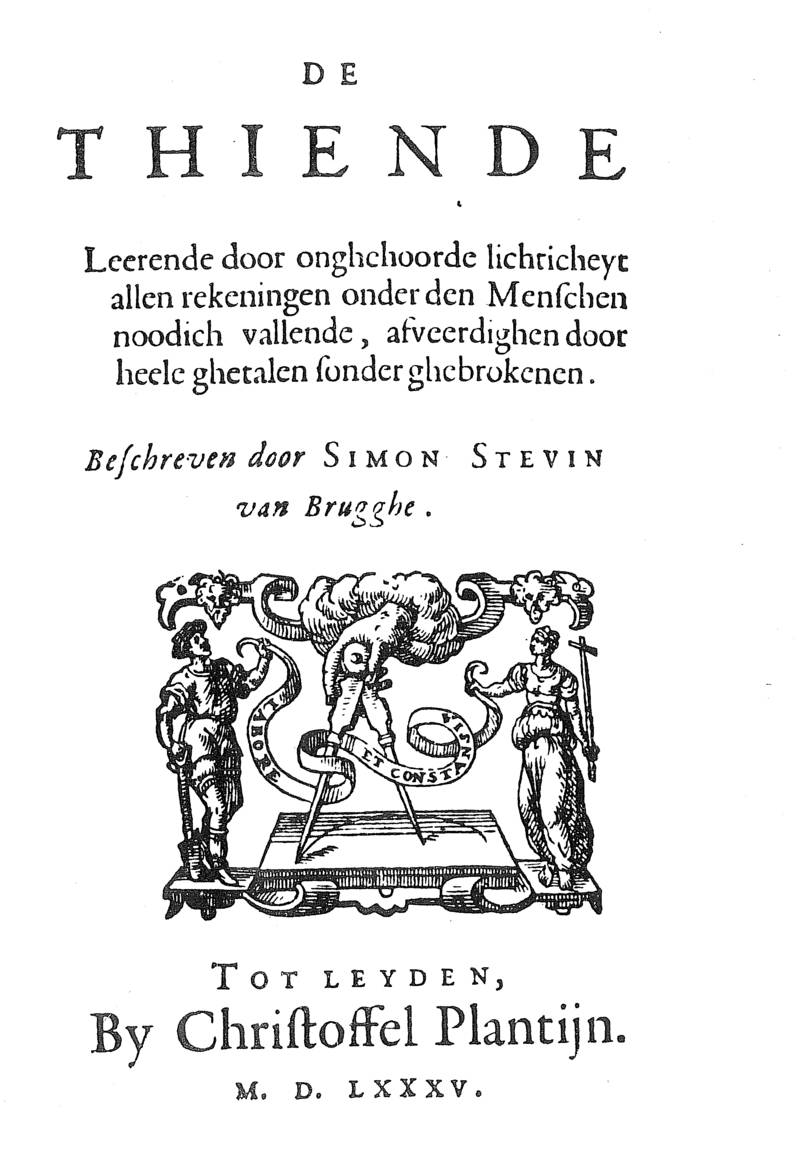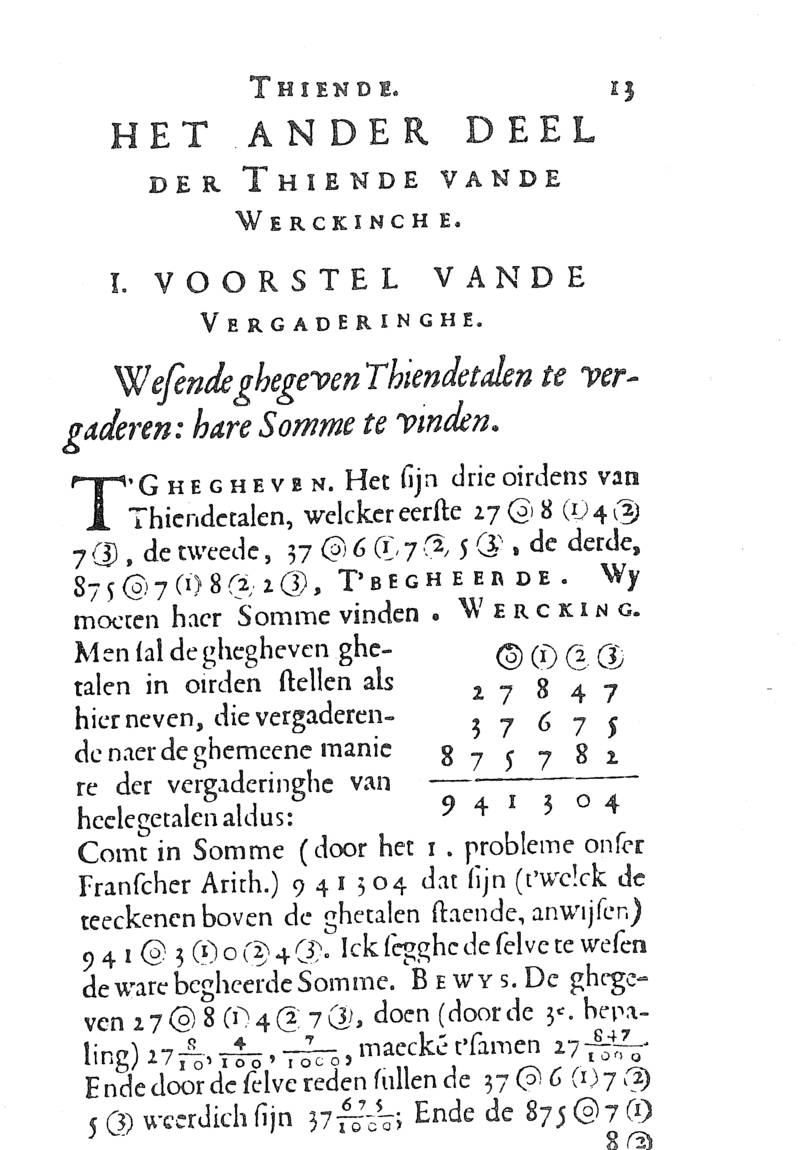- About MAA
- Membership
- MAA Publications
- Periodicals
- Blogs
- MAA Book Series
- MAA Press (an imprint of the AMS)
- MAA Notes
- MAA Reviews
- Mathematical Communication
- Information for Libraries
- Author Resources
- Advertise with MAA
- Meetings
- Competitions
- Programs
- Communities
- MAA Sections
- SIGMAA
- MAA Connect
- Students
- MAA Awards
- Awards Booklets
- Writing Awards
- Teaching Awards
- Service Awards
- Research Awards
- Lecture Awards
- Putnam Competition Individual and Team Winners
- D. E. Shaw Group AMC 8 Awards & Certificates
- Maryam Mirzakhani AMC 10 A Awards & Certificates
- Two Sigma AMC 10 B Awards & Certificates
- Jane Street AMC 12 A Awards & Certificates
- Akamai AMC 12 B Awards & Certificates
- High School Teachers
- News
You are here
'In these numbers we use no fractions': A Classroom Module on Stevin's Decimal Fractions - De Thiende
Stevin’s most important work, De Thiende, or The Art of Tenths (The Tithe), was written in Flemish (also known as ‘Belgian Dutch’) and published in 1585. Stevin himself published a French translation, La Disme, in 1585, and English translations appeared later. For example, the almost-complete English translation of De Thiende found at Phill Schultz's website is from 1603. The development of decimal fractions was percolating for quite some time – perhaps from the beginning of the first millennium. Stevin states in his preface:
… even so shall we speak freely of the great use of this invention; I call it great, being greater then any of you expect to come from me. Seeing then that the matter of this Disme (the cause of the name whereof shall be declared by the first definition following) is number, the use and effects of which your selves shall sufficiently witness by your continual experiences … (modified version of translation found in Sarton, 1935)
Indeed, the notation Stevin employed in his invention was quite clunky and did not become part of the mainstream use. It did, however, represent the first printed treatise on decimal fractions and the notation was instrumental in the development that followed. The title page of De Thiende and the first page of the section on computing sums of decimal numbers appear below. The quotation in my title, "In these numbers we use no fractions," is from a section of definitions preceding the section on adding decimals (Sanford, 1929, p. 24).

Above: Title page of Simon Stevin's De Thiende (1585)
Below: First page of the section on sums of decimal numbers from Simon Stevin's De Thiende (1585). The language is Flemish (closely related to Dutch).

Kathleen M. Clark (The Florida State University), "'In these numbers we use no fractions': A Classroom Module on Stevin's Decimal Fractions - De Thiende," Convergence (January 2011), DOI:10.4169/loci003333




